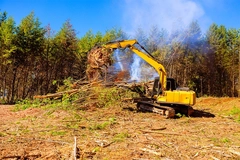
- Industry news
Industry news
- Category news
Category news
- Reports
- Key trends
- Multimedia
- Journal
- Events
- Suppliers
- Home
- Industry news
Industry news
- Category news
Category news
- Reports
- Key trends
- Multimedia
- Events
- Suppliers
Outlook for 2007 Saw Palmetto Harvest Seen as “Poor” – Valensa

Valensa issued a memorandum to customers citing a summer drought and the harvesting of unripe berries for the decrease in availability of nutraceutical-quality saw palmetto raw materials for the harvest season.

29/08/07 Company officials at Valensa International, LLC – the only integrated supplier of saw palmetto extract for men’s health nutraceuticals – have recently completed both a pre-harvest and ongoing harvest evaluation, finding the outlook for the 2007 saw palmetto crop to be “poor”. In early August, Valensa issued a memorandum to customers citing a summer drought and the harvesting of unripe berries for the decrease in availability of nutraceutical-quality saw palmetto raw materials for the harvest season that will run from late August through October. In the memorandum the company issued price increases for nutraceutical-quality saw palmetto extract of about 20%-30% depending on contractual situations.
According to Dr. Rudi E. Moerck, President of Valensa, what looked to be an excellent initial saw palmetto bloom earlier this year has turned into one of the worst berry yields on record. The size of the saw palmetto crop is potentially below market demand. “The world’s supply of saw palmetto comes from the Southeastern United States – and nowhere else. While the dry conditions in this region in the early spring resulted in an extensive bloom of saw palmetto berry blossoms, the continuing drought in the Southeastern US has caused a significant drop and loss of berries, and the corresponding reduction of the size of the berries that remain on the plants compared to previous years. This looks like a marginal to poor year for the availability of good saw palmetto berries”, he said. Saw palmetto is wildcrafted, meaning that it is not farmed or cultivated in any way. It grows throughout the state of Florida and in southern portions of Georgia, Alabama and South Carolina, but is commercially harvested mainly in the State of Florida. The plant does not grow in China though Chinese imports were a factor in previous years when there was a shortage of extract.
During the harvesting season, extractors and wholesalers of saw palmetto berries contract with groups in Florida to obtain berries. Harvesting season typically runs from mid-to late-August through the end of October, based on when berries become ripe. Saw palmetto berries must be dried within 2 to 3 days of harvesting to avoid spoilage.
Valensa is the world’s only integrated supplier of saw palmetto extract, from contracting picking areas, drying the berries to extraction. Valensa has the unique ability to track the harvesting and ripeness of berries to specific fields and harvesters. This position gives the company the required perspective to predict the size and quality of a saw palmetto berry crop in any given year.
Another factor that limits the availability of nutraceutical-quality saw palmetto raw materials this year is activity by berry buyers that purchase immature, green saw palmetto berries. The harvesting of berries before they are ripe means that fewer berries will be available for nutraceutical-quality saw palmetto extract, exacerbating the supply issues resulting from the smaller than usual crop.
According to Dr. Moerck, immature berries are less expensive to buy and both the oil content and quality are substantially lower than ripe saw palmetto berries. “Berry ripeness is the single most important determinant of the effectiveness of the final saw palmetto extract. The low oil content of immature berries makes the resulting ground berry powder more free flowing and therefore easier to use, but at the same time, the lower oil content and quality of the ground berry powder makes the hard-shell capsules made from these low quality powders suspect for their functionality as a nutraceutical. The only clinical trials that have shown positive effects of saw palmetto supplementation on the symptoms of benign prostrate hyperplasia have been conducted with saw palmetto extracts produced from fully mature berries,” he said. “The real shame of these early harvesting practices is that they take away from the industry’s ability to acquire ripe, nutraceutical-quality saw palmetto berries, thereby decreasing the availability and increasing the costs for everyone who is serious about saw palmetto as an effective supplement in promoting men’s health,” he added.
As the 2007 harvest begins, Moerck says that Valensa will have a better indication of the effect that a smaller than usual berry crop and the early harvest practices will have on market prices for mature, high quality saw palmetto berries. Based on this information, pricing for saw palmetto extract will be adjusted to reflect the realities of the 2007 saw palmetto berry crop. “At Valensa, we take our role of supplying our customers with high quality saw palmetto extracts that will perform up to consumer expectations very seriously. We feel that this is vital to the perception of saw palmetto as an effective nutraceutical in the minds of consumers and the medical community,”’ he said. “Once again, we are offering our free saw palmetto testing service to any suppliers of saw palmetto – whether they buy their extract material from us or not – as an attempt to help the industry make sure it is supporting the trust that consumers have in their products,” he added.










